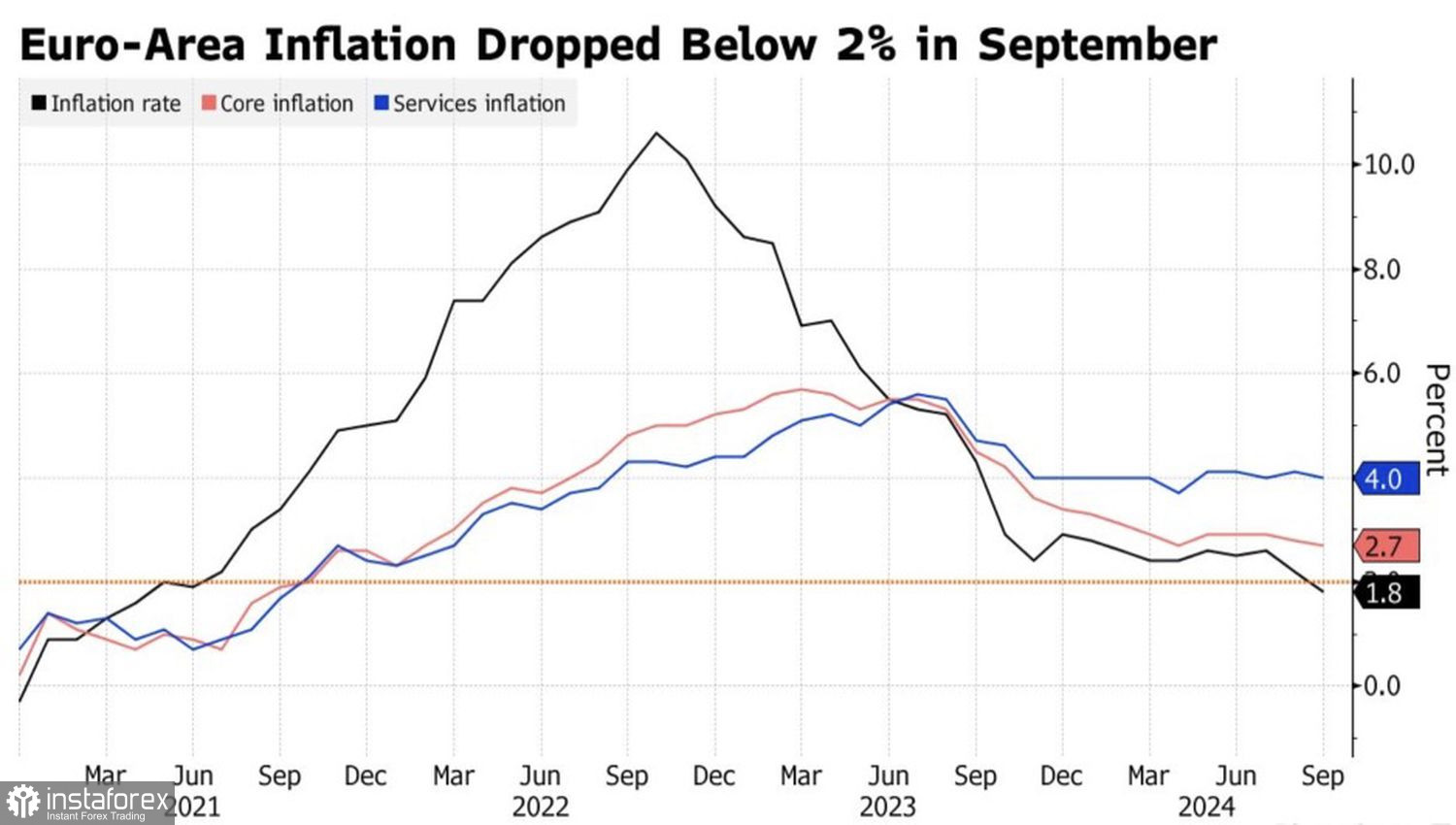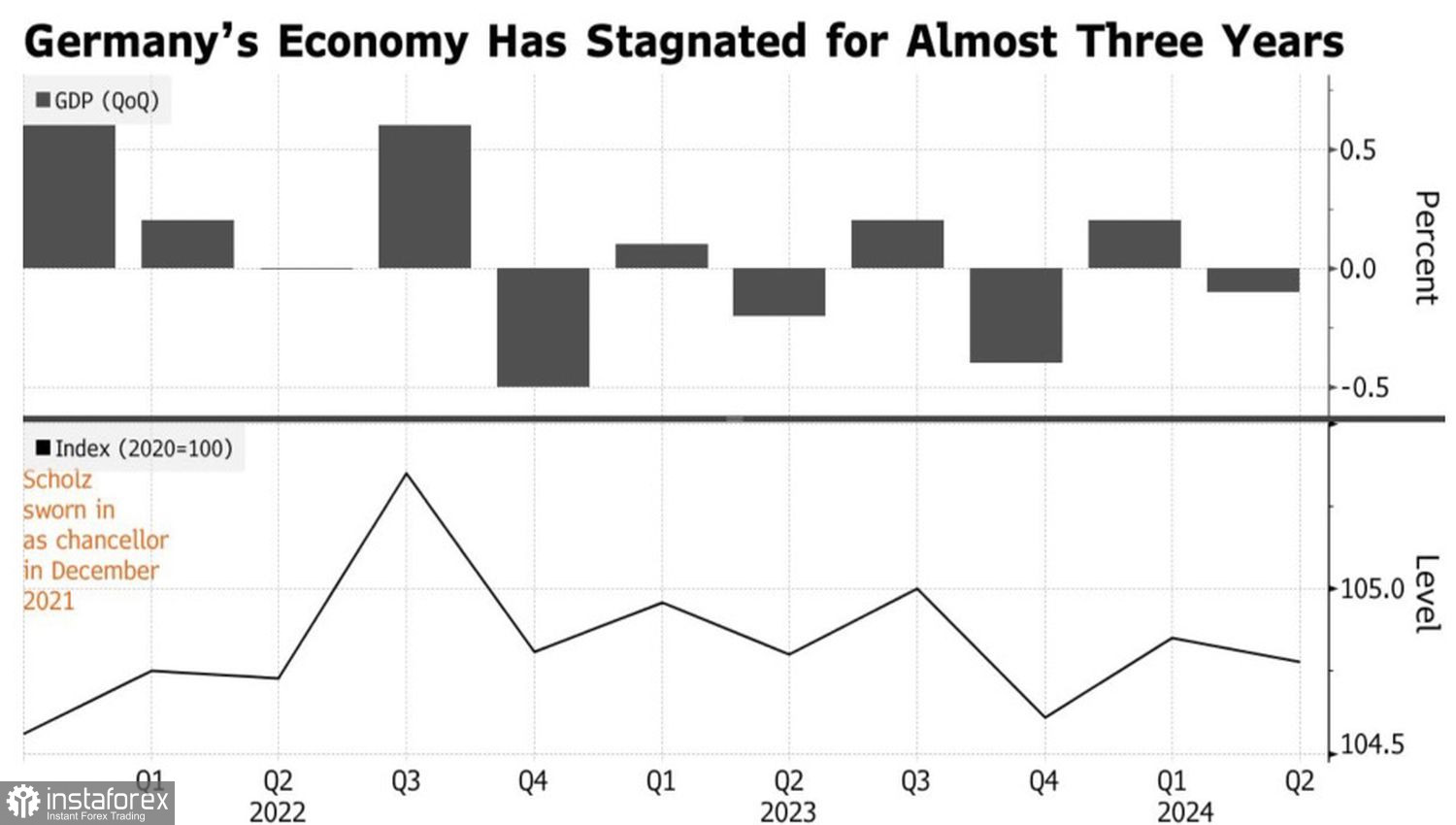The lack of expected fiscal stimulus from China and the downward revision of Germany's GDP forecast by the government has put pressure on the euro. Even the passionate speech by Slovak Central Bank Governor Peter Kazimir did not support the EUR/USD bulls. He expressed doubts about a rate cut at the ECB meeting on October 17, although markets consider it a done deal. He noted that making a decision based on a single inflation report is reckless. It is worth noting that in September, the CPI fell below the European Central Bank's target.
Dynamics of European Inflation

Other hawks in the Governing Council were more accommodating. Isabel Schnabel expressed concerns about the slowdown in the Eurozone's economy and discussed the potential return of deflation. Joachim Nagel stated that he is ready to consider the idea of easing monetary policy at the upcoming meeting. In contrast, the doves are ready to act. Francois Villeroy de Galhau called the next step toward monetary expansion very likely, while Yannis Stournaras sees two more such steps by the end of 2024.
Meanwhile, the German government has revised down its GDP growth forecast. In April, Berlin expected a 0.3% expansion in the economy, but it now predicts a 0.2% contraction in 2024. This would be only the second decline in GDP since 1990, when Germany reunified.
Dynamics of Germany's GDP

The weakness of the German economy, the largest in the Eurozone, contrasts with positive data from its American counterpart. Danske expects that the divergence in GDP growth, among other factors, will lead to a drop in EUR/USD to 1.07 and highlights other strengths of the U.S. dollar—escalation of the Middle East conflict and increased financial market volatility.
Investors eagerly await the release of the minutes from the September FOMC meeting, as well as U.S. inflation data. Consumer prices are expected to slow down to 2.3%. This indicates deflation and gives the Fed reason to continue its cycle of monetary easing.
Formally, both events are bullish for EUR/USD, as the content of the minutes will likely be dovish, and inflation growth rates are set to fall to their lowest levels since March 2021. However, these are well-known facts. It is highly likely that any rise in the euro will be quickly sold off by traders.
The medium-term outlook for EUR/USD is starting to look bearish again. The U.S. dollar has adopted the theme of American exceptionalism, which served it well in 2023-2024. The Eurozone economy looks distinctly weak and requires substantial easing of the ECB's monetary policy for support.
Technically, on the daily chart, EUR/USD formed an Anti-Turtles pattern. The inability of the bulls to capitalize on the inside bar signals their weakness. If the main currency pair fails to stay above 1.095, it is likely to continue its decline towards 1.09 and 1.083. It makes sense to stick to a selling strategy.





















